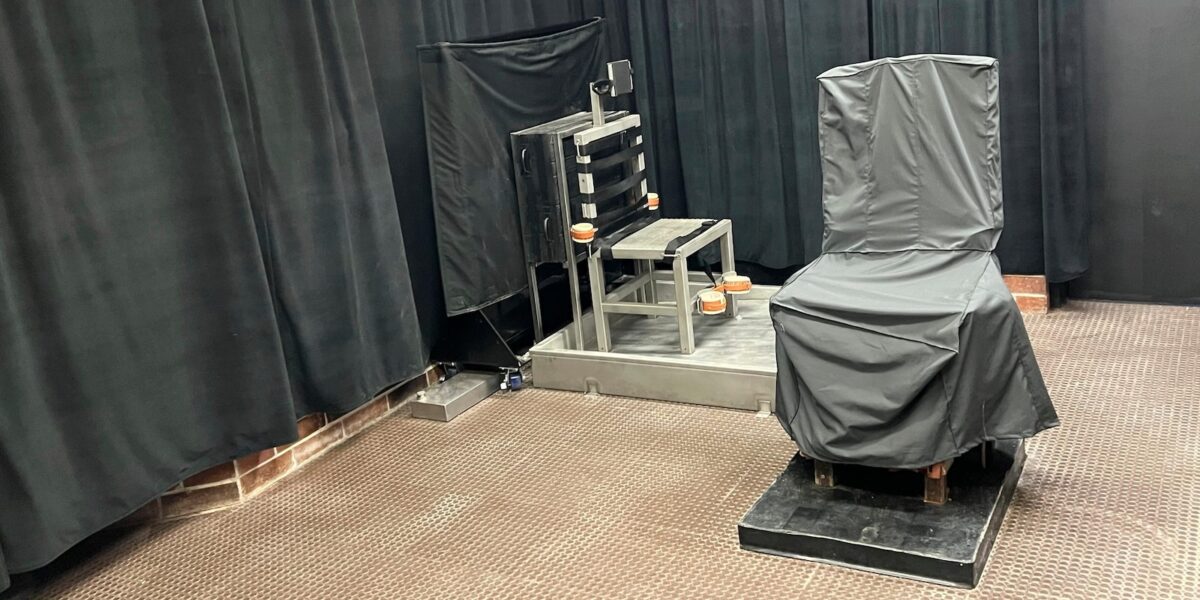COLUMBIA, S.C. — The South Carolina Supreme Court has set a March 7 date for the latest execution in the state’s suddenly busy death chamber.
The justices on Friday rejected a request from Brad Sigmon’s lawyers to delay setting a date for his death until they get autopsy results from the inmate killed in last week’s lethal injection, the third prisoner put to death since September.
Sigmon’s attorney said they wanted to find out if Marion Bowman was given two doses of pentobarbital at his execution on Jan. 31 and have time to look over his autopsy report so Sigmon can decide how he wants to die — with a lethal injection, in the electric chair or by a firing squad.
“With the information currently available to Mr. Sigmon, he cannot begin to assess, much less contend, which method is the more inhumane,” his attorneys wrote in a Wednesday court filing.
Sigmon, 67, was sentenced to death for the 2001 killings of the parents of his ex-girlfriend. Sigmon beat the husband and wife with a baseball bat. They were in separate rooms of their Greenville homes and Sigmon went back and forth attacking them as he realized each one was still alive, investigators said.
Sigmon then kidnapped his ex-girlfriend at gunpoint, but she escaped from his car. He shot at her as she ran, but missed, prosecutors said.
“My intention was to kill her and then myself. That was my intention all along. If I couldn’t have her, I wasn’t going to let anybody else have her. And I knew it got to the point where I couldn’t have her,” Sigmon said in a confession typed out by a detective after his arrest.
Sigmon will have two weeks to decide how he wants to die. If he doesn’t choose by Feb. 21, he will be electrocuted by default. South Carolina’s firing squad has yet to be used and the last electrocution was in 2008.
South Carolina went 13 years between executions before restarting them last year in part because the state couldn’t obtain drugs for lethal injections. A shield law passed in 2023 keeps private the supplier and manufacturer of the drug, the people who carry out the execution and the method they use.
Lawyers for Sigmon and other condemned inmates have been asking for months for more information on the pentobarbital used in lethal injections and how it is administered.
Prison officials told the pathologist performing an autopsy that two large doses of pentobarbital were given 11 minutes apart to Richard Moore, who was executed on Nov. 1.
A defense expert who reviewed the results said fluid found in Moore’s lungs probably made him feel like he was consciously drowning and suffocating during the 23 minutes from when the execution started to when he was pronounced dead.
But another anesthesiologist who reviewed Moore’s autopsy records for the state said fluid is often found in the lungs of prisoners killed by lethal injection, and the accounts by witnesses and other evidence gave no indication Moore was conscious beyond 30 seconds after the sedative was first administered.
Prison officials have not said why Moore needed a second massive dose of the sedative or whether two doses are part of their normal procedures, citing the shield law. Officials also would not say if Bowman was given two doses during last week’s execution.
The first inmate executed, Freddie Owens, requested no autopsy because of religious reasons.
When South Carolina restarted executions in September, the state established new procedures as they changed from three drugs for lethal injection to just using pentobarbital. State officials said the protocols are similar to how the sedative is used in executions by the federal government and several states.
Sigmon and two other inmates are out of their normal appeals and the state Supreme Court has promised to space out the executions across a minimum of five-week intervals to give prison staff and defense lawyers, who are often representing several condemned inmates, time to handle legal matters.
South Carolina has put 46 inmates to death since the death penalty was restarted in the U.S. in 1976. In the early 2000s, it was carrying out an average of three executions a year. Nine states have put more inmates to death.
But since the unintentional execution pause, South Carolina’s death row population has dwindled. The state had 63 condemned inmates in early 2011. It currently has 29. About 20 inmates have been taken off death row and received different prison sentences after successful appeals. Others have died of natural causes.


